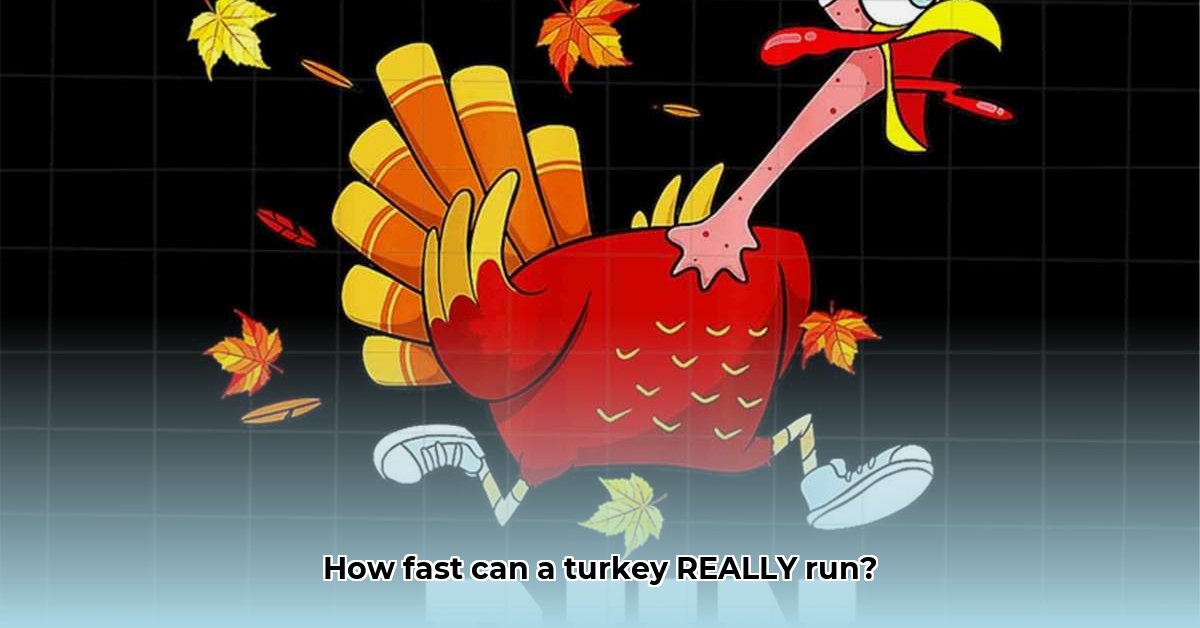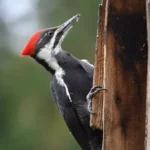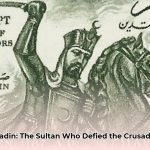When you picture a turkey, “speed” might not be the first word that comes to mind. But prepare to be surprised! These birds are more athletic than they appear, capable of impressive bursts of speed. Let’s dive into the world of turkey locomotion and uncover just how fast a wild turkey can run, exploring factors that influence their velocity, the adaptations that make them agile, and how they compare to their domesticated relatives.
Wild Turkey Speed and Agility: More Than Meets the Eye
Wild turkeys possess an agility and speed often underestimated. They use this speed to evade predators and navigate diverse terrains, exhibiting a remarkable combination of power and nimbleness.
Peak Velocity: Wild Turkeys as Sprint Specialists
Wild turkeys can achieve speeds of up to 25 miles per hour (40 kilometers per hour) in short sprints. This rapid acceleration is crucial for escaping danger. This burst, however, is not sustainable over long distances; it’s a sudden surge of power deployed when immediate escape is necessary.
Constant Pace: The Pace of Survival
While 25 mph represents their maximum, a turkey’s typical running speed is significantly lower. There is limited research that clearly quantifies these sustained speeds. Factors include the bird’s age, health, and the surrounding environment. Understanding the variance between burst speed and sustained speed helps us comprehend how turkeys manage energy expenditure and navigate their environment.
Influences on Speed: What Dictates a Turkey’s Velocity?
Several elements influence a turkey’s running speed. Age is a significant factor. Younger turkeys often exhibit greater agility, while older birds may have diminished speed. Terrain plays a crucial role. Open fields allow for maximum velocity. Dense forests pose obstacles that reduce speed. The presence of predators triggers heightened adrenaline, prompting the fastest possible escape.
The Anatomy of Speed: How Turkeys Are Built for Running
The physique of wild turkeys has evolved to facilitate rapid movement. Their powerful leg muscles provide the force needed for quick acceleration. Their lightweight frame minimizes the energy expenditure required for running. These physical attributes allow turkeys to achieve impressive speeds relative to their size.
Survival Tactics: Speed as a Key Defense Mechanism
Speed is a critical component of a wild turkey’s defense strategy. When danger looms, turkeys will frequently employ a zigzag pattern to evade predators. They also roost in the trees at night, utilizing short bursts of flight to reach the safety of higher branches. These integrated strategies enhance their odds of survival.
How Selective Breeding Impacts Speed
Domesticated turkeys, selectively bred for increased meat production, are notably slower. The increased weight and altered muscle structure compromise their agility. Domestic turkeys don’t need the speed for predator avoidance; their survival relies on human care.
Ongoing Exploration: Unanswered Questions in Turkey Locomotion
Despite existing knowledge, there are still unknowns regarding turkey locomotion. Research is needed to quantify sustained running and flying speeds in varied conditions. Understanding how factors like age, terrain, and predator interactions influence these metrics is vital. This data could refine conservation strategies and wildlife management practices.
The Verdict: Turkeys – Agile Athletes
Turkeys possess surprising athletic capabilities. Their speed, agility, and adaptability enable them to thrive in diverse environments. Acknowledging these traits enriches our appreciation for these birds. It underlines the importance of conserving their habitats to ensure the continuation of these survival strategies.
Key Points:
- Wild turkeys can sprint up to 25 mph in short spurts.
- Age, terrain, and the presence of threats affect running speed.
- Adaptations like strong legs, lightweight builds, and zigzag running patterns enhance survival.
- Domesticated turkeys are significantly slower due to selective breeding.
- Further research can deepen our understanding of turkey locomotion.
- Scipio Africanus: Hannibal’s Nemesis: Rise, Fall, and Legacy - August 2, 2025
- Unveiling Superorganisms: Are Ant Colonies One Mind? - August 2, 2025
- Unveiling The Northern Lights (Aurora Borealis): The Science Behind Nature’s Light Show: 2025 Guide - August 2, 2025















